Too Many Kids Are Still Dying in Hot Cars, and This Tech Can Help
From smarter apps and car seats to more self-aware vehicles, there's a growing number of solutions to help ensure that the unthinkable doesn't happen.
"You don't think it could ever happen to you," said Janette Fennell, president and founder of Kids and Cars, referring to the accidental death due to heatstroke of children left in cars.
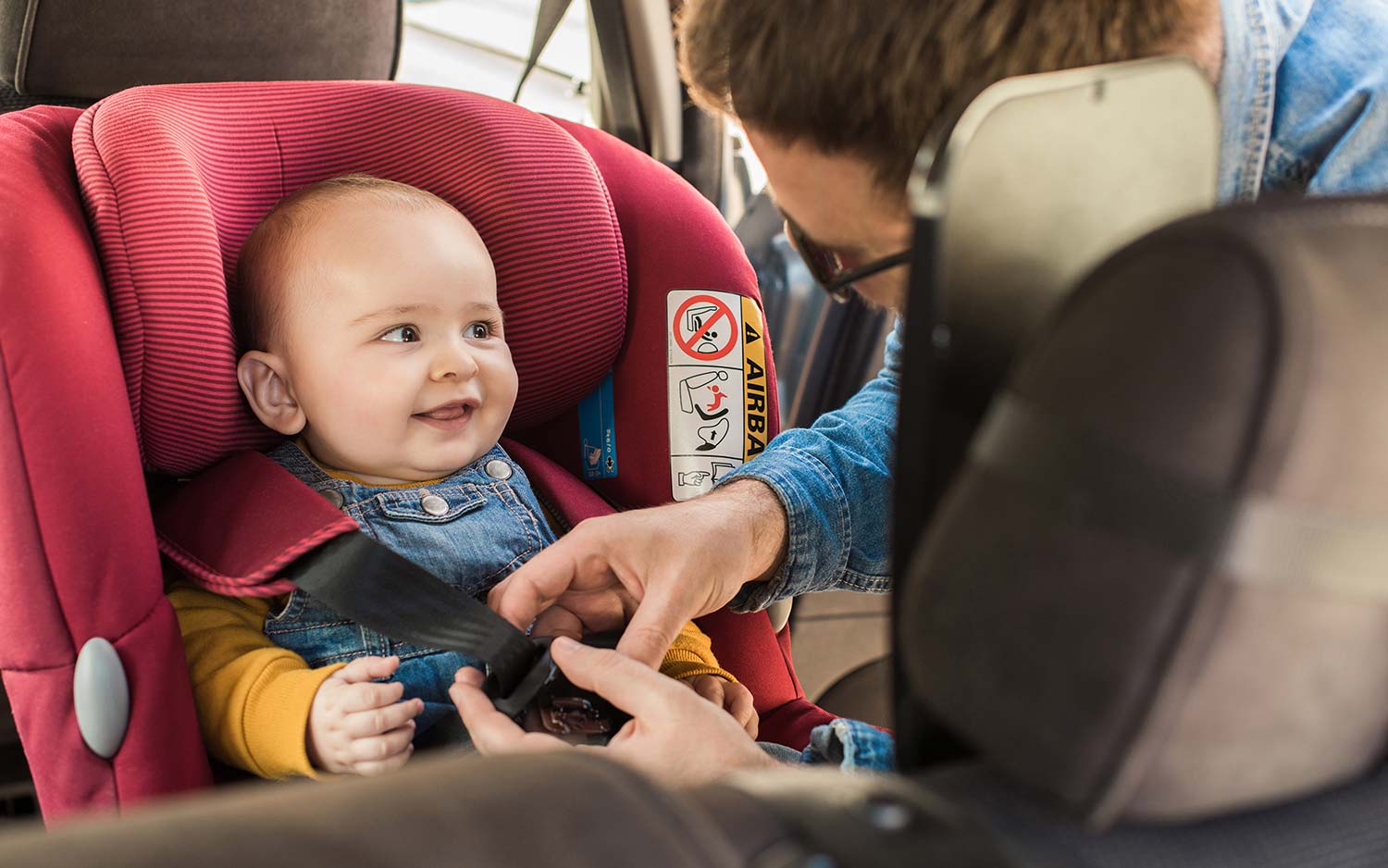
But it does happen. Every nine days a child dies from vehicular heatstroke in the U.S., according to Kids and Cars. Tragically, the children are often unintentionally left in the car by their own distracted parents, and it's not just a summer danger. Within 10 minutes, according to a report in the journal Pediatrics, the temperature inside a closed car can rise 20 degrees, and children have died in cars when the temperature outside was only 60 degrees, according to safety-seat maker Evenflo.
Since 1990, over 800 children have died from heatstroke in the U.S. after being left in cars, an average of 37 children each year, according to the National Safety Council. It is a needless tragedy, say safety advocates, but one common enough to garner its own acronym: PVH, for pediatric vehicular heatstroke.
There are now several technological solutions to combat this issue, ranging from apps and safety gear to a handful of cars available with built-in child-reminder systems. Advocates want more, however, and have been encouraging proposed legislation that would mandate that carmakers include prevention systems and alerts in all vehicles in the future.
How Apps Can Help
The simplest solution for parents and caregivers is to use a smartphone as a warning system. For example, Waze, the wildly popular traffic app, has a little-known setting people can use to remind them a toddler is in the back seat.
"In the U.S. alone, nearly 40 children and hundreds of pets die of heat stroke from being left in a hot car each year, so we felt it was necessary to offer this possibly life-saving reminder to our users."— Terry Wei, Waze spokesperson
To turn it on, you go to "Settings," and then under "Advanced settings" you'll find "General" settings, which is where you'll locate a menu where you can select the "Child Reminder" feature. Once it's turned on, whenever you reach the destination on a route, a chime on the phone will sound and display a Child Reminder alert to check the back seat.
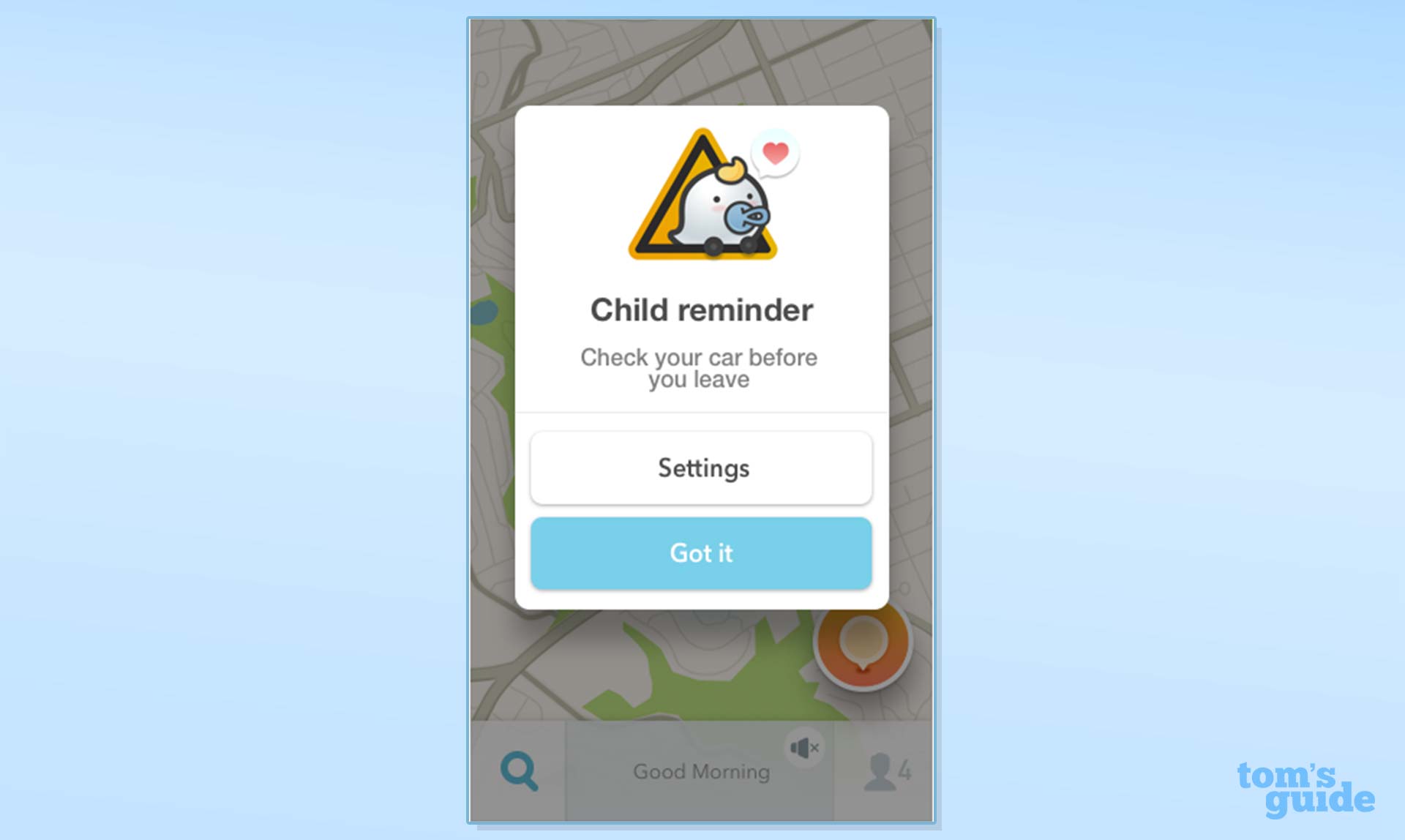
"In the U.S. alone, nearly 40 children and hundreds of pets die of heatstroke from being left in a hot car each year," said Waze spokesperson Terry Wei, "so we felt it was necessary to offer this possibly life-saving reminder to our users."
Get instant access to breaking news, the hottest reviews, great deals and helpful tips.
MORE: Best Parental Control Apps 2018 - iPhone & Android Phone Monitoring
It's not a foolproof solution, however. The Waze child alert works only if you have your phone with you and you happen to be using the app to navigate somewhere. Unfortunately, most people don't use the app for regular trips to the grocery store and other sundry tasks. And the child-reminder setting is buried several layers deep in the app, making it awkward to turn on and off at will.
A Smarter Car Seat
Although there have been some aftermarket systems, such as clip-on sensors and pads, safety experts don't recommend them because anything you add to a child's seat can potentially reduce its effectiveness in a crash. A better approach is to build such a system into a child's car seat or a car.

Child-car-seat maker Evenflo offers a system it calls SensorSafe in a number of infant and toddler car seats, which start at $90.
"Evenflo's SensorSafe generates a series of tones to remind the driver that a child is secured in a car seat in the rear seat of the vehicle, within 2 seconds of turning off the vehicle,” explained Sarah Haverstick, Evenflo safety advocate. The system has two components, a special chest clip in the seat and a wireless receiver that plugs into the onboard diagnostics (OBD) port under the dash of most cars.
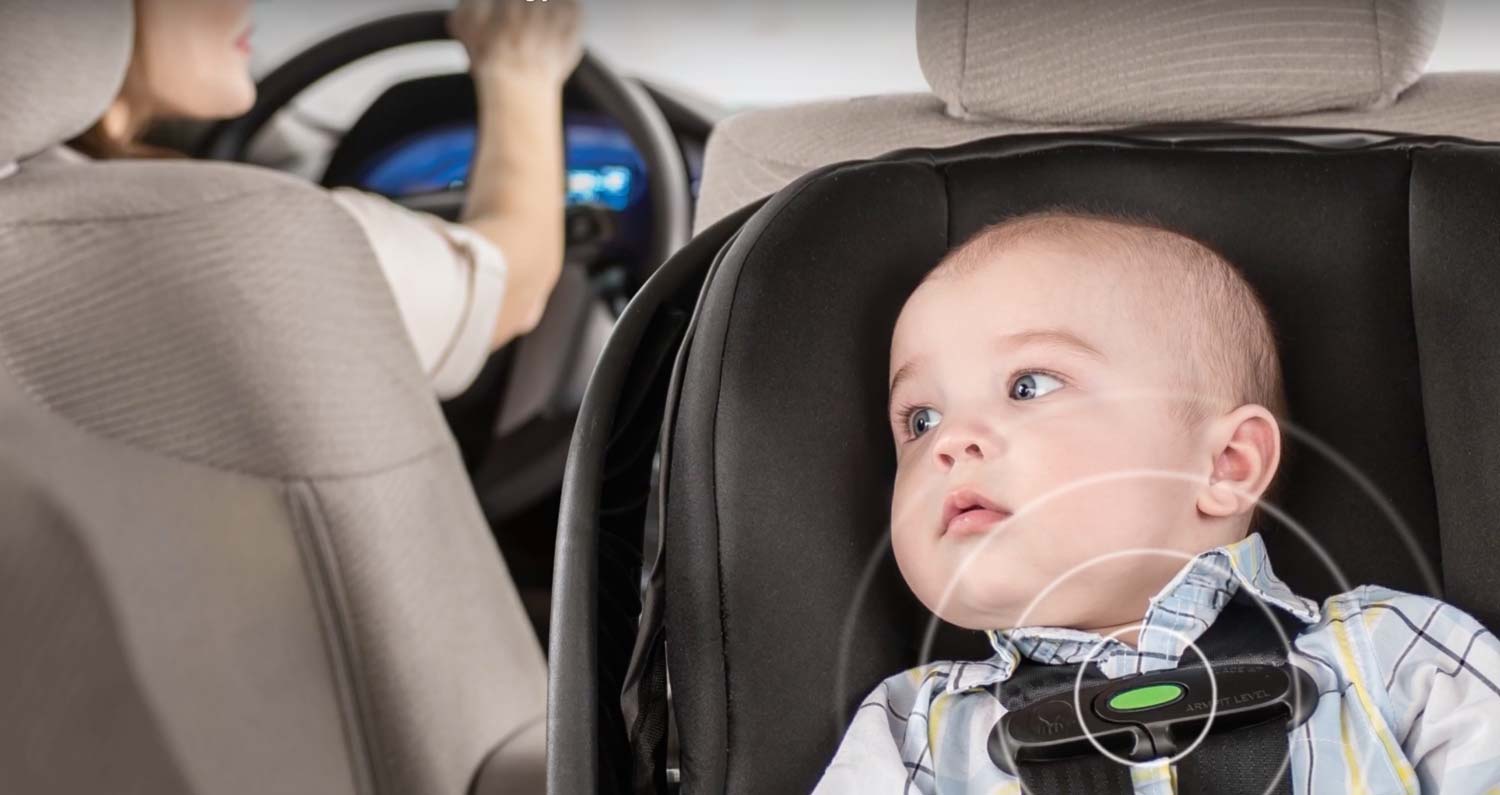
The advantage of the Evenflo system is that it doesn't require an app or a smartphone, and it alerts parents if the child unbuckles his or her seatbelt while in transit. The system works in cars from 2008 on. Hybrid cars and vehicles with start/stop fuel-saving systems can also use Evenflo's SensorSafe, but a different OBD receiver — available from the company — is required.
Automakers Take Action
Elsa Foley is the mother of two boys, ages 4 and 5, so she's sensitive to the problem of PVH. She also happens to be an engineer at Nissan, so she did something about it. Foley helped develop Nissan's rear-door alert system that first appeared in the 2018 Pathfinder.
"The idea is to have the horn honk to remind drivers to check the back seat" when they park, Foley said. "We paired it with a message in the instrument cluster, but since you might miss that, if you don't open the rear door, after a couple of seconds a distinctive horn honk sounds."
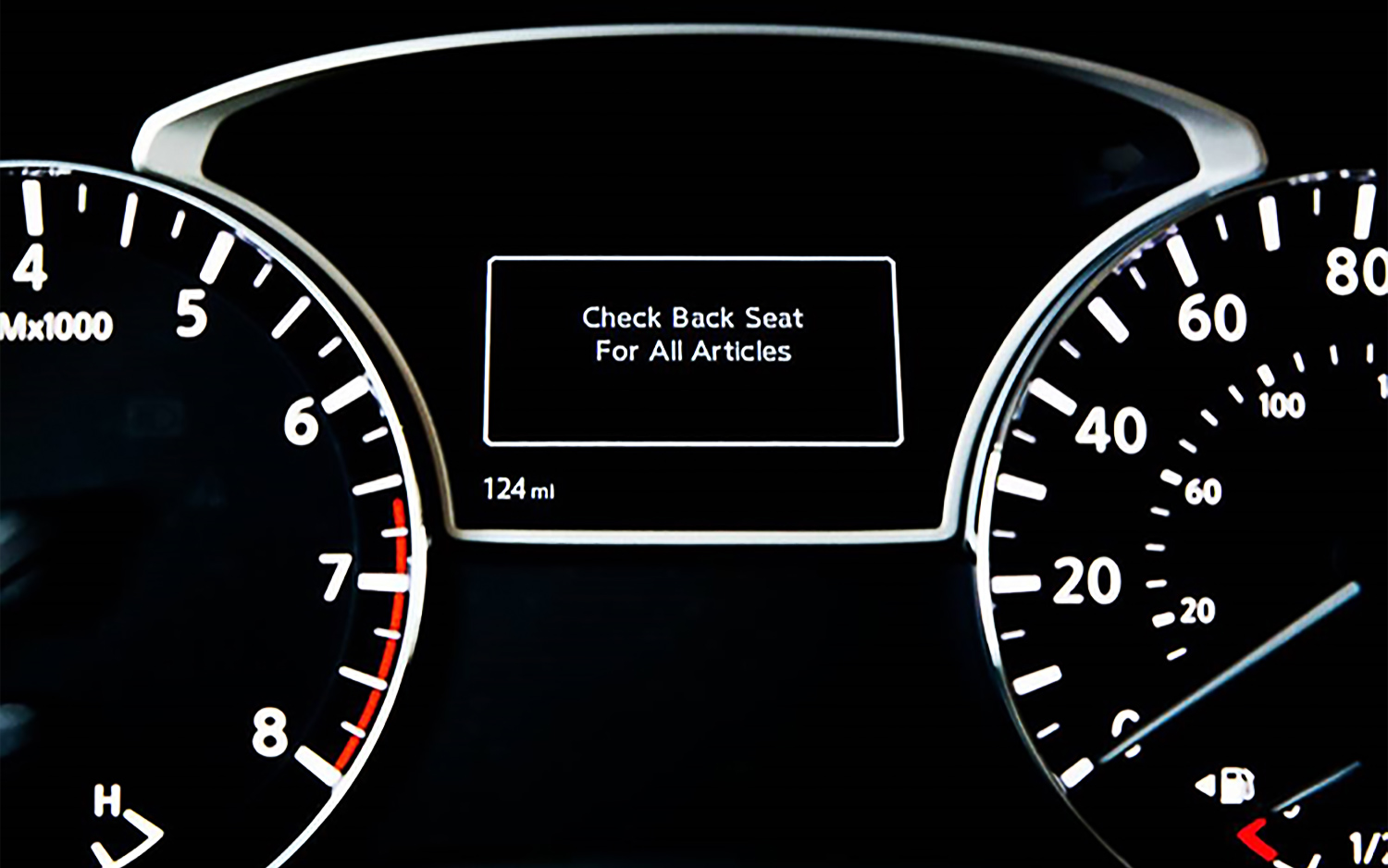
Foley said Nissan focused on a simple yet effective solution that could easily be added to all of the company's vehicles in the future. The software is also smart enough to account for parents unpacking a stroller; if you open the rear hatch first, the car won't honk at you right away.
Other automakers have begun to introduce systems to prevent PVH. GM, for example, has a similar rear-seat reminder as standard equipment in its Terrain, Acadia and Yukon SUVs.
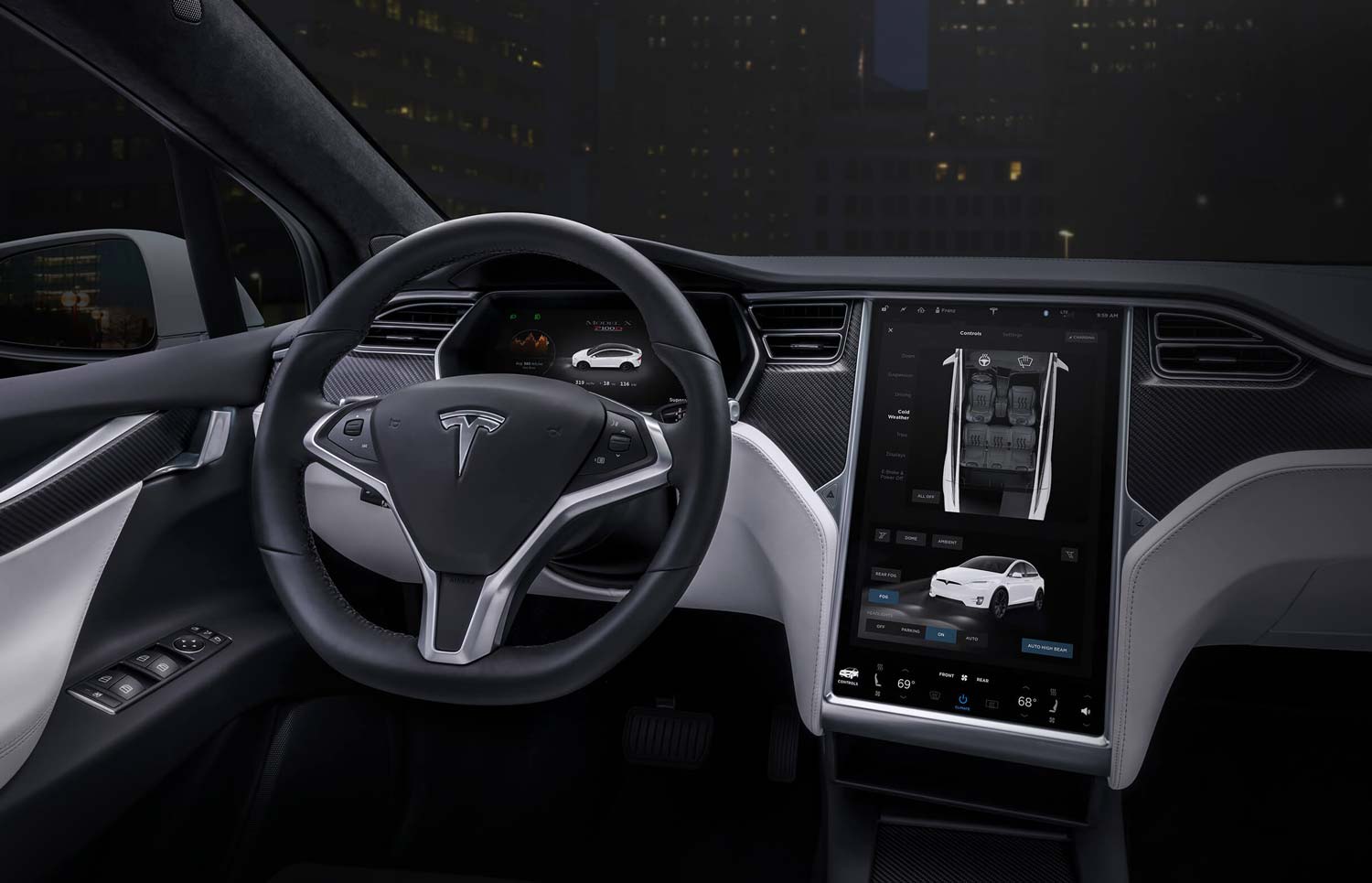
Tesla has a cabin-overheat-protect feature that can automatically turn on a vehicle's air conditioning should the interior temperature rise above 105 degrees Fahrenheit (it will stay on for up to 12 hours).
"The idea is to have the horn honk to remind drivers to check the back seat."— Elsa Foley, Nissan engineer
Several car companies are exploring other solutions.
"Honda has investigated these types of fatalities and is working on a countermeasure that will be applied in our future vehicles," said Natalie Kumaratne, a safety specialist at Honda.
Ultimately, the goal is to have such alerts in all cars and SUVs.
Legislation on the Way (Maybe)
There is legislation wending its way through the U.S. Congress now. Originally a separate bill, the "rear-seat-occupant-alert-system" mandate has been added to the Self Drive Act, which is intended to facilitate the introduction of autonomous vehicles.
MORE: Best Family Movies on Netflix
Adding it to the bill makes technical sense, since autonomous cars will need to be able to sense who is in a vehicle at all times using pressure, video or ultrasonic sensors. Unfortunately, like most government bills, it has been bogged down in red tape.
Kids and Cars' Fennell, who fought for years to make rear-view cameras mandatory to prevent back-over deaths, wants to see action sooner, rather than later. (Rear-view cameras became required equipment in cars and light trucks just last month.)
"If you don't buckle your seat belt, you get a buzz," Fennell said. "If you leave your lights on, the car automatically shuts them off. So is it more important to prevent a dead battery than a dead child?"
John R. Quain has been reviewing and testing video and audio equipment for more than 20 years. For Tom's Guide, he has reviewed televisions, HDTV antennas, electric bikes, electric cars, as well as other outdoor equipment. He is currently a contributor to The New York Times and the CBS News television program.

